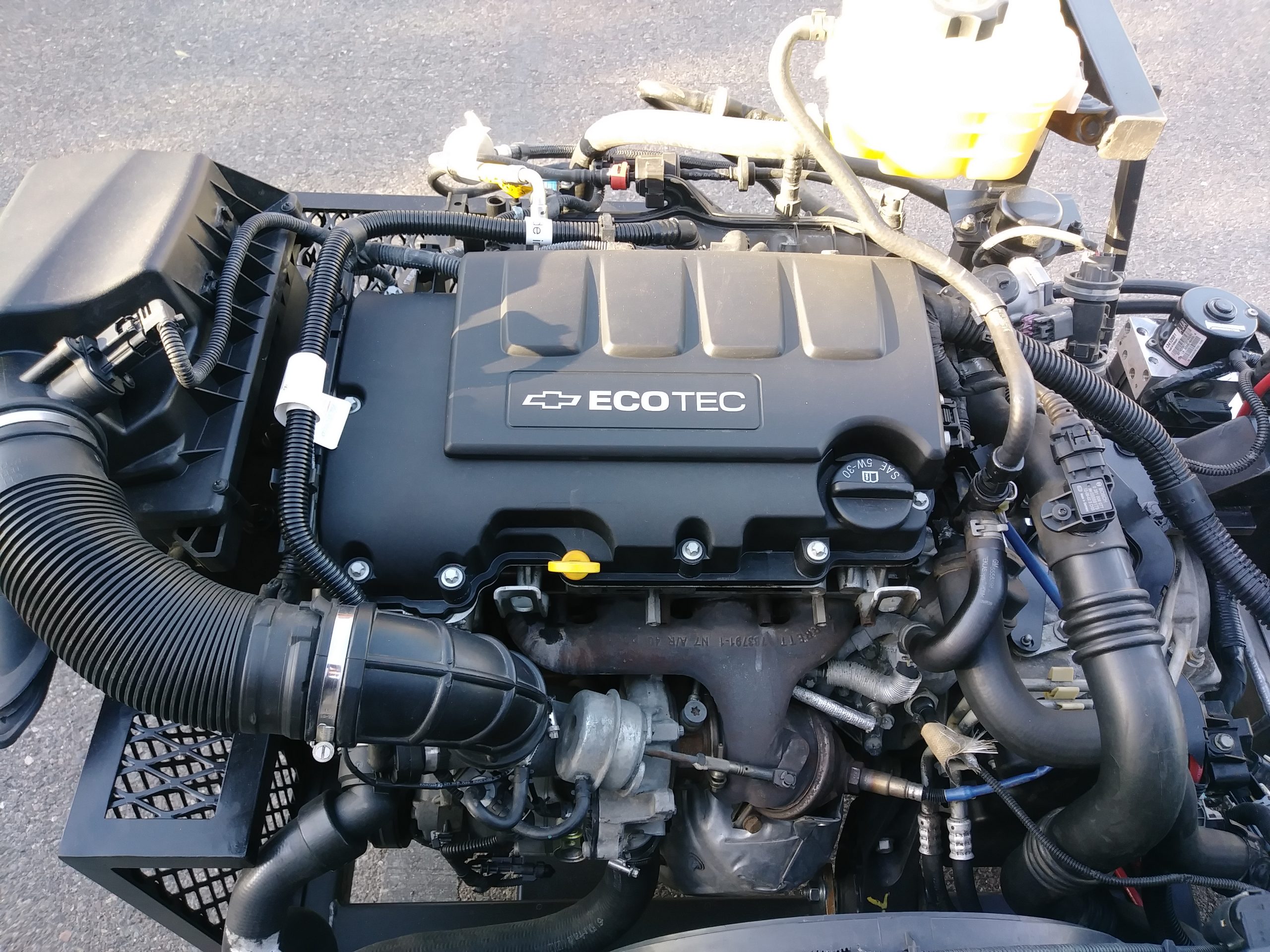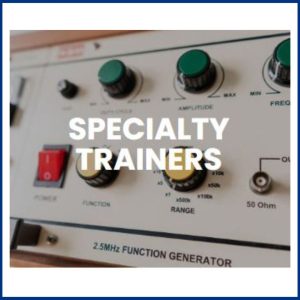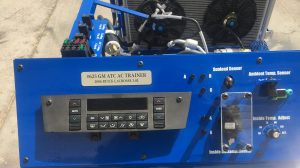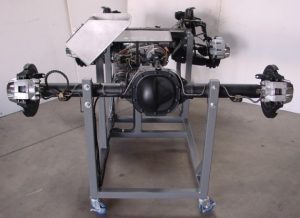We provide state-of-the-art engine-run stand trainers. We can build an engine run stand from a 1965 Chevy small block to a 2020 direct-injection 4-cylinder turbo engine. We have built simple trainers that run and operate as they would in a vehicle to complex trainers that have random intermittent faults that can be turned on wirelessly.
Safety Features
All of our run stands come standard with various safety features to make sure your students are safe.
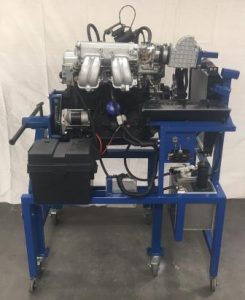
- Steel guards on all rotating parts that could injure someone.
- Warning labels such as pinch point, caution hot exhaust, and caution rotating parts
- An emergency shutdown switch that will shut the trainer down instantly if there is a problem
- Large heavy-duty battery disconnect that isolates the battery from the trainer for when you need to work on it or for long periods of storage so you don’t drain the battery
- All radiators have expanded metal to protect students from getting burned but also to protect the radiator from damage when moving the trainer around
- All exhaust components have expanded metal to protect from students accidentally touching the hot exhaust
Standard Features
All of our trainers come with some standard features and components
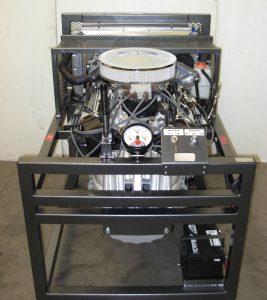
- Throttle pedal to control engine RPM
- Instrument cluster to monitor engine vitals
- Forklift tubes to lift and move engines
- Sturdy steel frame on casters with brakes for easy movement
- Custom aluminum fuel cell
- Battery and fuse panels
- Keyed ignition switch
Options
We also offer an extensive amount of options to our engine trainers.
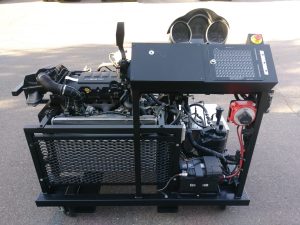
- You can add a Break Out Box that gives you the ability to introduce fault for students to diagnose and has test points for reading values. The test point panel significantly extends the usage life of the trainer harness by making it so students do not have to back probe connectors or remove connectors to perform tests
- OEM test point labels are available for easier identification of the test points
- We offer full vinyl covers with zippers that protect the trainer when it is not in use
- Clear sight glass tubes with LED’s so students can see coolant flow
- Test point at sensor locations
- Larger capacity fuel cells for longer run times
- Dual OEM keys
- Instrument cluster protective cover

